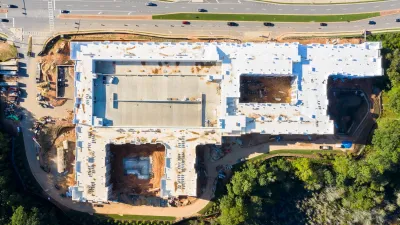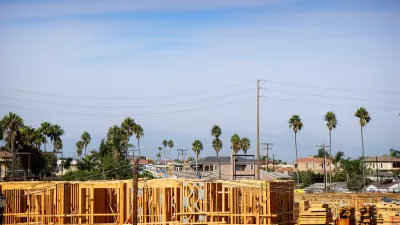A new approach to affordable housing attempts to overcome the traditional approaches of supply-side economics and government-funded investments and extractions.

Joe Cortright writes on the subject of a "third way" to build affordable housing—in addition to the traditional approaches of supply-side economics and public investment in affordable housing through subsidies and inclusionary zoning.
While acknowledging the importance of both methods of adding and preserving affordable housing, Cortright is amplifying news of a third way that doesn't conform to either of those approaches while acknowledging their shortcomings.
[Washington, D.C. developer Rob] Stewart and his firm are working with the Federal City Council in Washington DC on a proposal they call the Washington Housing Initiative (WHI), which aims to create more affordable housing units, more quickly, in neighborhoods that are on the cusp of change. The essential idea is to use a combination of private investment and public funds to acquire existing housing, and maintain its availability for low and moderate income households. Buying existing housing units is dramatically less expensive that building new units, and can be done much more quickly.
And more:
WHI aims to have a lower cost of capital and lower operating cost that traditional affordable housing approaches. A key economy comes from taking a “fund” approach rather than a “project” approach to structuring financing. In most affordable housing projects, funding is arranged on a project-by-project basis, with each project consisting of a different set of actors, and funding sources, and with the added complexity of construction financing and site-specific risk. The WHI would be structured as a pooled fund, with financing not tied to individual projects, but spread across many projects. Because the fund is buying existing buildings, construction lending isn’t needed and other risk factors (approval or construction delays) are minimized. A fund, especially one led by private management, could be quick and nimble, and minimize overhead costs of acquiring properties.
There's a white paper that shares detail insights into the development as a potential model for projects in other locations.
FULL STORY: A third-way for approaching affordable housing

Rethinking Redlining
For decades we have blamed 100-year-old maps for the patterns of spatial racial inequity that persist in American cities today. An esteemed researcher says: we’ve got it all wrong.

Planetizen Federal Action Tracker
A weekly monitor of how Trump’s orders and actions are impacting planners and planning in America.

Walmart Announces Nationwide EV Charging Network
The company plans to install electric car chargers at most of its stores by 2030.

New State Study Suggests Homelessness Far Undercounted in New Mexico
An analysis of hospital visit records provided a more accurate count than the annual point-in-time count used by most agencies.

Michigan Bills Would Stiffen Penalties for Deadly Crashes
Proposed state legislation would close a ‘legal gap’ that lets drivers who kill get away with few repercussions.

Report: Bus Ridership Back to 86 Percent of Pre-Covid Levels
Transit ridership around the country was up by 85 percent in all modes in 2024.
Urban Design for Planners 1: Software Tools
This six-course series explores essential urban design concepts using open source software and equips planners with the tools they need to participate fully in the urban design process.
Planning for Universal Design
Learn the tools for implementing Universal Design in planning regulations.
City of Moorpark
City of Tustin
City of Camden Redevelopment Agency
City of Astoria
Transportation Research & Education Center (TREC) at Portland State University
Regional Transportation Commission of Southern Nevada
Toledo-Lucas County Plan Commissions





























